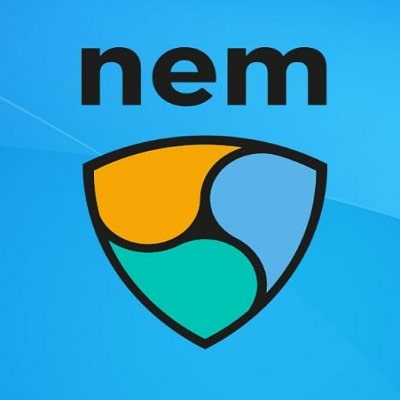
Features Cryptocurrency NEM (XEM)
NEM was created in 2015 at the initiative of crypto enthusiasts who exchanged ideas on the Internet about the advantages and disadvantages of existing currencies. Initially, the new system was conceived as a fork of the NXT currency, but in the end it was decided to implement NEM from scratch.
Features and Benefits of NEM
At first glance, the architecture of NEM is similar to that of Bitcoin and other traditional cryptocurrencies: users access a peer-to-peer network of nodes (called NIS – NEM Infrastructure Server) through a client (NanoWallet). On the other hand, NEM offers a number of further developments that are designed to improve the function in the understanding of developers and distinguish the system from its predecessors.
For example, NEM has replaced Proof-of-Work with a concept called Proof-of-Importance. Here, the decision to keep the blockchain running is made not by the solution of the cryptographic puzzle, but by the frequency and volume of transactions of the users involved.
On the one hand, this is intended to reward the desire of users to participate as actively as possible in the network, i.e. not to store purchased XEM assets without using them. At the same time, it should be ensured that participants with large resources and computing power, or who have already accumulated a large amount of XEM, are not given preference. Proof of importance thus also acts as a measure against the main problems that NEM developers think they see, especially in the case of bitcoin, namely that proof of work depends on computing power and thus favors miners who already have large resources (in bitcoin or in classical currencies). The fact that proof of importance, unlike complex cryptographic proof-of-work puzzles, requires much less computing power is an advantage in terms of network performance.

Harvesting instead of mining
While proof of importance precludes NEM mining, other currency allocation mechanisms have been put in place. Harvesting replaces the traditional effort of attaching a new block to the blockchain. In addition to certain technical requirements for their node, a “combine” must have a minimum balance of 10,000 XEM. If so, then he has the right to generate new blocks and, as a reward, receives commissions for the transaction received from this block. In a broader sense, “combiners” are comparable to the miners of conventional cryptocurrencies. In addition, there is an additional reward for “combines” that achieve very high throughput of their nodes, the so-called supernodes.
Another feature of NEM is also related to the modified block generation algorithm: the speed is increased even more compared to other systems. While Bitcoin has a block mining time of 10 minutes (a new block in the blockchain every 10 minutes), and Litecoin has 2.5 minutes, NEM generates a new block every minute.
Consensus and Trust in NEM
In addition to the above functions, NEM implements a trust management system between individual network nodes. EigenTrust++, a further development of the eponymous EigenTrust, uses a simple algorithm to calculate numerical values that, in a sense, quantify the trustworthiness of network participants. EigenTrust++ evaluates the quality of blockchain governance by other nodes in the network from the point of view of each individual node. Trust relationships are transitive, i.e. if node A trusts node B, then A also trusts all nodes that B trusts. Thus, a confidence value is calculated for each node to ensure the integrity of the blockchain.
As with Ripple, at the launch of NEM, 8,999,999,999 (i.e., almost 9 billion) XEM were available in total and distributed almost entirely among a group of participants. An indefinite reserve has been retained for future developments. By eliminating proof of work, XEM mining becomes not only impossible, but also unintended by the concept of this currency. Another parallel with Ripple is that when NEM was conceived, it was apparently primarily intended as a means of transferring money. There is also a fork of NEM called Mijin which was developed privately and is currently being tested and used by Japanese banks.
